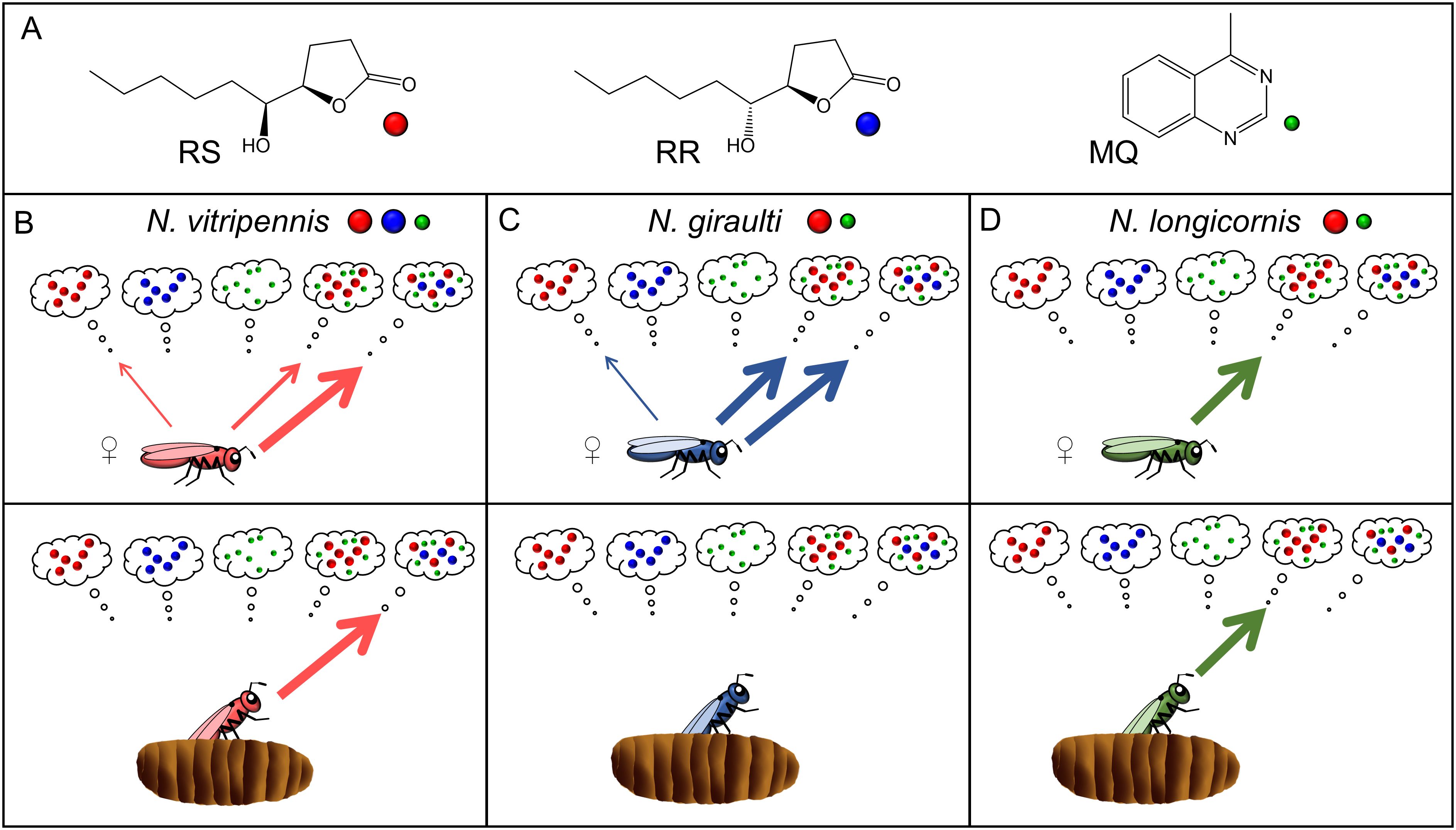- 1Institute of Zoology, University of Regensburg, Regensburg, ;Germany
- 2Department of Chemistry, Kenyon College, Gambier, OH, ;United States
A Corrigendum on
Male sex pheromone in the parasitoid wasp Nasonia longicornis: chemical and behavioral analyses
By Kurtanovic A, Hofferberth J and Ruther J (2022). Front. Ecol. Evol. 10:1076398. doi: 10.3389/fevo.2022.1076398
In the published article, there was an error in Figure 1 as published. The chemical structures of (4R,5S)- and (4R,5R)-5-hydroxy-4-decanolide were incorrect. The corrected Figure 1 and its caption appear below.

Figure 1. (A) Structures of the components of the male abdominal sex pheromones in the genus Nasonia, (4R,5S)-5-hydroxy-4-decanolide (RS), (4R,5R)-5-hydroxy-4-decanolide (RR), and 4-methylquinazoline (MQ). (B–D) Scheme summarizing the female responses of the hitherto investigated species N. vitripennis (Niehuis et al., 2013, Ruther et al., 2014), N. giraulti (Niehuis et al., 2013, Ruther et al., 2014), and N. longicornis (this study) to the male sex pheromone components and combinations thereof. Pheromone composition of the different species is indicated by colored dots near the species names. The upper panels show the response of 2-d-old virgin females excised from the hosts, the lower panels refer to females collected at the moment of emergence from the host (for more details see text).
The authors apologize for this error and state that this does not change the scientific conclusions of the article in any way. The original article has been updated.
Publisher’s note
All claims expressed in this article are solely those of the authors and do not necessarily represent those of their affiliated organizations, or those of the publisher, the editors and the reviewers. Any product that may be evaluated in this article, or claim that may be made by its manufacturer, is not guaranteed or endorsed by the publisher.
Keywords: mate finding, parasitic wasp, precopulatory isolation, sex attractant, species-specificity, (4R,5S)-5-hydroxydecanolide, (4R,5R)-5-hydroxydecanolide, 4-methylquinazoline
Citation: Kurtanovic A, Hofferberth J and Ruther J (2024) Corrigendum: Male sex pheromone in the parasitoid wasp Nasonia longicornis: chemical and behavioral analyses. Front. Ecol. Evol. 12:1481677. doi: 10.3389/fevo.2024.1481677
Received: 16 August 2024; Accepted: 19 August 2024;
Published: 03 September 2024.
Approved by:
Frontiers Editorial Office, Frontiers Media SA, SwitzerlandCopyright © 2024 Kurtanovic, Hofferberth and Ruther. This is an open-access article distributed under the terms of the Creative Commons Attribution License (CC BY). The use, distribution or reproduction in other forums is permitted, provided the original author(s) and the copyright owner(s) are credited and that the original publication in this journal is cited, in accordance with accepted academic practice. No use, distribution or reproduction is permitted which does not comply with these terms.
*Correspondence: Joachim Ruther, am9hY2hpbS5ydXRoZXJAdXIuZGU=
 Alisa Kurtanovic1
Alisa Kurtanovic1 John Hofferberth
John Hofferberth Joachim Ruther
Joachim Ruther